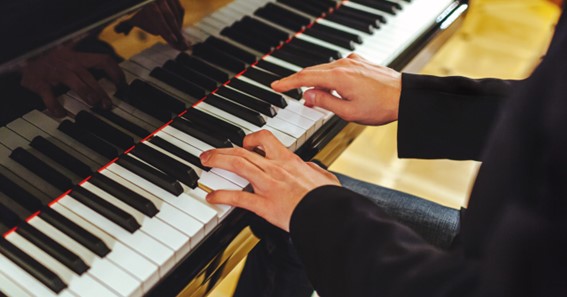The piano is a timeless instrument that has captivated audiences for centuries. Its versatility and expressive range have made it popular for composers seeking to convey their musical ideas. But what goes into the process of the composition? This article will explore the keys to creation, unveiling the secrets of piano composition that can help aspiring composers bring their musical visions to life.
I. Understanding the Instrument:
Before delving into composition, it is crucial to understand the instrument itself deeply. Familiarise yourself with the instrument’s range, timbre, and technical possibilities. Spend time playing various scales, arpeggios, and chords to learn the instrument’s capabilities. You can compose better if you are more knowledgeable about it.
II. Developing Musical Ideas:
Melody: Every great composition begins with a compelling melody. Focus on creating memorable, emotionally resonant melodies suited to the instrument’s expressive capabilities. Experiment with different intervals, rhythms, and phrasing to craft melodies that captivate the listener’s ear.
Harmony: Harmony forms the foundation of a composition. Learn about chord progressions, harmonic tension, and resolution. Explore different voicings and inversions to create rich and colourful harmonic textures. Understanding the interplay between melody and harmony is crucial for crafting engaging compositions.
III. Exploring Composition Techniques:
Form and Structure: Compositions often follow established musical forms, such as sonata or ternary forms. Study these structures and experiment with variations to create a sense of cohesion and development in your compositions. Consider the pacing and flow of your piece, carefully balancing repetition and contrast to maintain the listener’s interest.
Texture and Dynamics: Compositions can vary significantly in their texture and dynamic range—experiment with different textures, from sparse and delicate to dense and virtuosic. Utilise various dynamic markings to convey a range of emotions and moods. Understanding how to control texture and dynamics effectively will add depth and nuance to your compositions.
IV. Embracing Creativity and Individuality:
Experimentation:
- Be bold and push the boundaries of traditional composition.
- Experiment with unconventional techniques, extended techniques, and prepared instruments to create unique sounds and textures.
- Embrace experimentation to discover your artistic voice and create compositions that stand out from the crowd.
Personal Expression: Composition is a vehicle for personal expression. Infuse your compositions with your own emotions, experiences, and perspectives. Let your music tell a story or evoke specific feelings. Give your works a sense of personality to establish a strong bond between you, the composer, and the listener.
V. Refinement and Revision:
Self-Critique:
- Critically evaluate your compositions.
- Analyse your work’s structure, harmonic progression, melodic development, and overall coherence.
- Be willing to revise and refine your compositions, seeking opportunities to enhance your pieces’ emotional impact and musicality.
Seek Feedback: Share your compositions with trusted mentors, fellow musicians, or a supportive community. Embrace constructive criticism and use it to improve your compositions. Listening to the perspectives of others can provide valuable insights and help you grow as a composer.
Click here – The Dramatic Journey: Crafting Legends, One Performance at a Time
Conclusion
A piano composition is a beautiful art form that requires a combination of technical skill, musical understanding, and creative imagination. By understanding the instrument, developing musical ideas, exploring composition techniques, embracing creativity and individuality, and refining your work, you can unlock the secrets of composition and create music that resonates with you and your audience. So, seize the keys to creation and embark on your musical journey through the enchanting world of composition. With dedication, practice, and an open mind, you can bring your musical visions to life and leave a lasting impact on those who listen.
